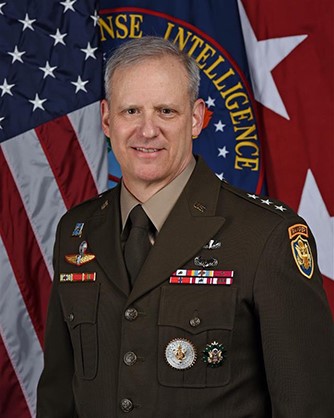Defense Intelligence Agency (DIA) Director Lt. Gen. Scott Berrier recently shared his views and mission priorities concerning key issues. The DIA, like the CIA, is an intelligence organization. The CIA focuses on providing intelligence to the White House. The DIA is the provider of foreign intelligence relating to combat-related missions.
Berrier explained DIA’s long-term strategy to address Russia and China in an era of strategic competition. He noted that “The success that the intelligence community had about the prediction of the Russian invasion [of Ukraine] was really, really interesting,” He further explained that DIA’s biggest successes came from what he described as a “dynamic policy environment” that allowed DIA to modify existing policies to share intelligence with more and more partners. In doing so, the intelligence community was able to convince partners and allies of Russia’s impending invasion and when it would happen.
Based on what the DIA chief stated, it raises the question of why the Biden Administration failed to equip Ukraine with defensive weapons earlier, or what the U.S. President meant when he claimed he wouldn’t object to a “little” invasion.
While squarely focused on Russia, China and global defense in general, DIA is also investing in the cyberspace domain. It is leveraging data available through open-source intelligence (also known as OSINT), private sector partnerships and the expertise at U.S. Cyber Command. More and more, the first blow in warfare comes not from bombs but from internet attacks on key infrastructure. The recent assault on NYC airports is a prime example. Though not part of an attack on America, it was a test of Moscow’s ability to do so in the future.
On the difference between foundational intelligence and cyber intelligence, Berrier said, “If you think about foundational military intelligence, it’s based on understanding what the foreign militaries have, what their capabilities are, based on the physical presence of these things. It’s harder in cyber because you may know where a cyber facility physically is located, but you really don’t know what activity is going on inside that facility.”
He added that publicly available information and social media add a layer of complexity that further challenges cyber intelligence and remains a challenge for the intelligence community.
The DIA chief noted that substantial investment in cyber network defense is crucial to national security. DIA is investing in manpower and expertise and leveraging OSINT growth to expand the foundational understanding of foreign defense-related cyber issues and sharing OSINT with non-traditional partners.
“We think that there’s room for discussion about what the future of cyber intelligence really is in partnership with Cyber Command, NSA and others across the community to really define where it is we need to go,” he said.
Berrier also discussed the history of The Joint Worldwide Intelligence Communications System, or JWICS, a global intelligence network used by the defense intelligence community.
“We are going to invest significant dollars over the next five years to continue to modernize JWICS to ensure that it’s as hard as it can be; that it’s taking advantage of access to cloud data; and that we, along with our IC partners, are in the right place at the right time to deliver the information that we do as quickly as we can.”
MARS, DIA’s Machine-assisted Rapid-repository System, will fully replace the Military Intelligence Integrated Database, or MIDB, by 2024. Berrier noted that MIDB is an effective but dated database and that MARS will provide a richer program for analysts by infusing data with artificial intelligence and machine learning.
Berrier outlined the four lines of effort in DIA’s 10-year Strategy – intelligence advantage, the culture of innovation, allies and partnerships, and adaptive workforce.
“The third one, maybe the most important, is Allies and Partnerships,” said Berrier. “Over the course of this latest conflict with Russia and Ukraine, our allies and partners have been key. And we need to foster that and we need to nurture those relationships to the best of our ability. So that when we need help, that help is there and we can call.”
